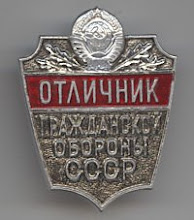In the course of my studies into the history of the Soviet nuclear complex, I occasionally encounter descriptions of unusual research that I have never encountered in western sources. An example of one such discovery is радиогальванизм- literally "radiogalvanism." This is described in a book I purchased in St. Petersburg this summer titled Атомная энергия в мирных целях- "Atomic Energy in Peaceful Uses." Published in Leningrad in 1957, this volume contains chapters including "The Development of Science About the Atomic Nucleus" and "The Atomic Icebreaker." The final chapter, however, is on the subject of nuclear batteries, and it is this chapter that describes the "radiogalvanic source of current."
As the name implies, this kind of nuclear battery was the same kind of chemical battery that we're all familiar with- with a radioactive twist. The oxidation of the electrolyte was achieved by the use of a beta source. (The article suggests that alpha sources were also tested, but it states that the best results were achieved with beta sources.) According to the description in the book, the "coefficient of use of the energy of decay" entering into the oxidation process with their apparatus was 60%- and even if the battery could only capture a fraction of that back as usable electricity, that still puts most kinds of nuclear batteries to shame. The chapter concludes that "Several experiments, conducted according to these principles, yielded promising results."
I'm kind of skeptical. If this "betagalvanic nuclear battery" really worked so well, it's kind of hard to imagine how it became lost to history. The entire chapter was written by the scientists who performed the original research at the Leningrad Electrotechnical Institute in 1954, so perhaps they exaggerated their success. Does anyone know of western experiments with devices like this? My attempts to find references to any on the internet came up with nothing.
Friday, November 02, 2007
Subscribe to:
Post Comments (Atom)

No comments:
Post a Comment